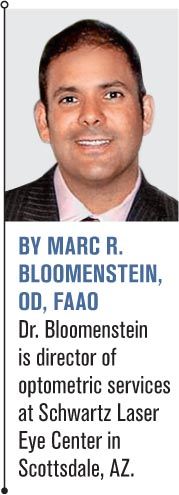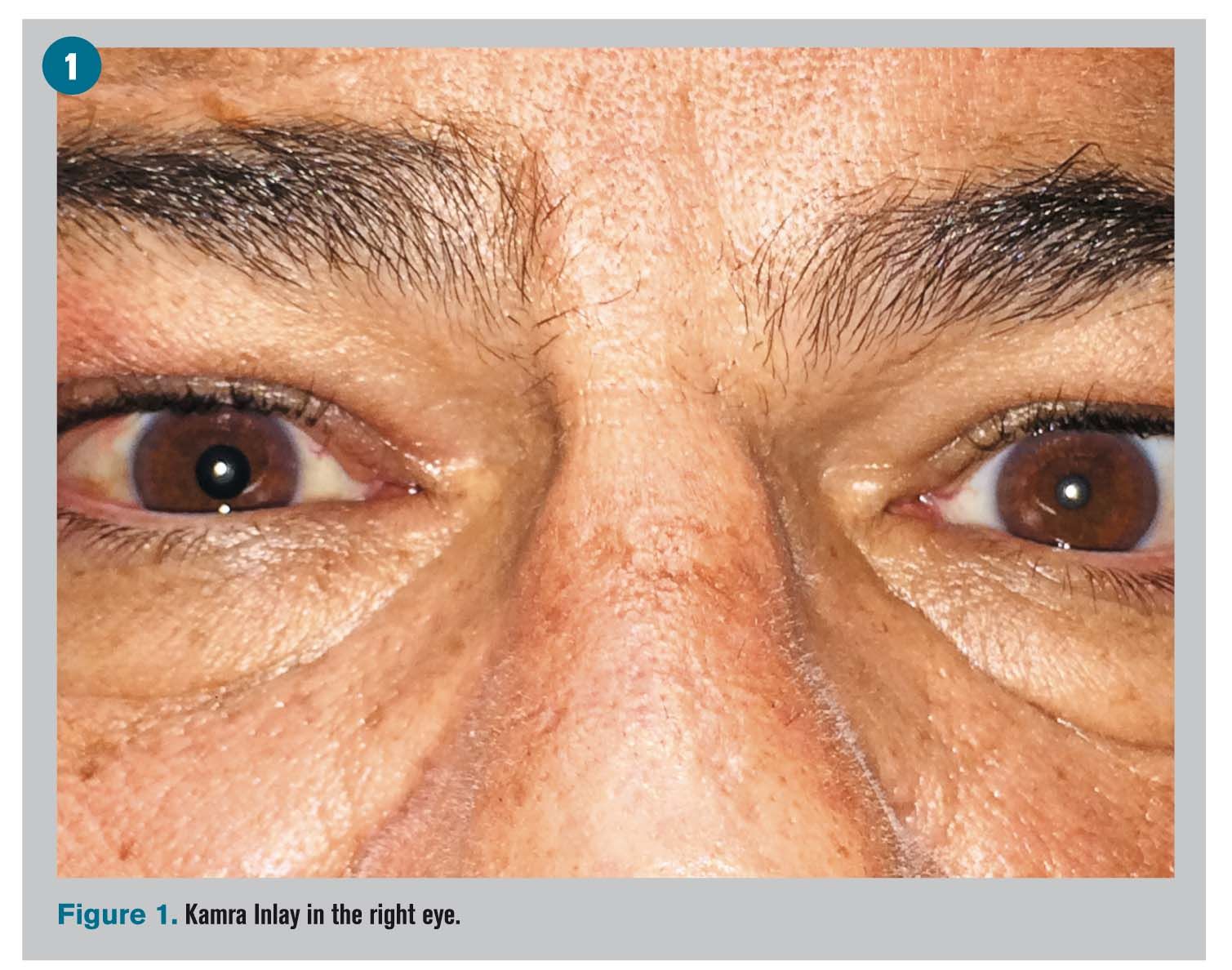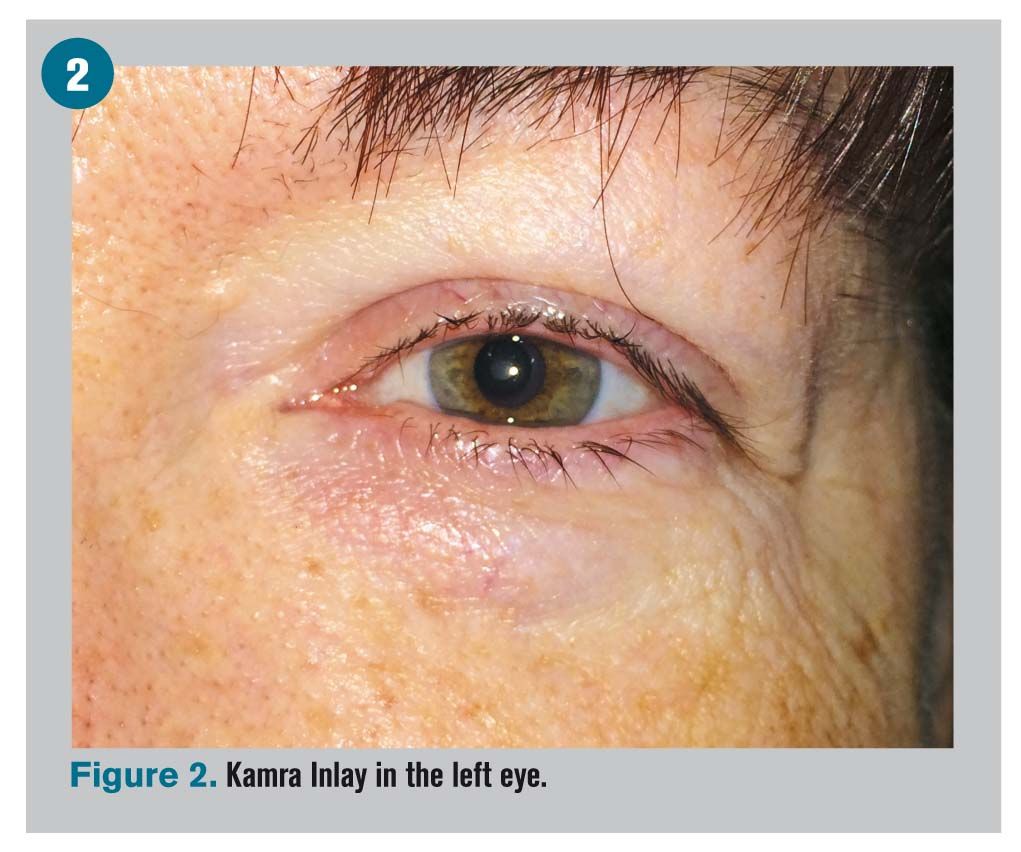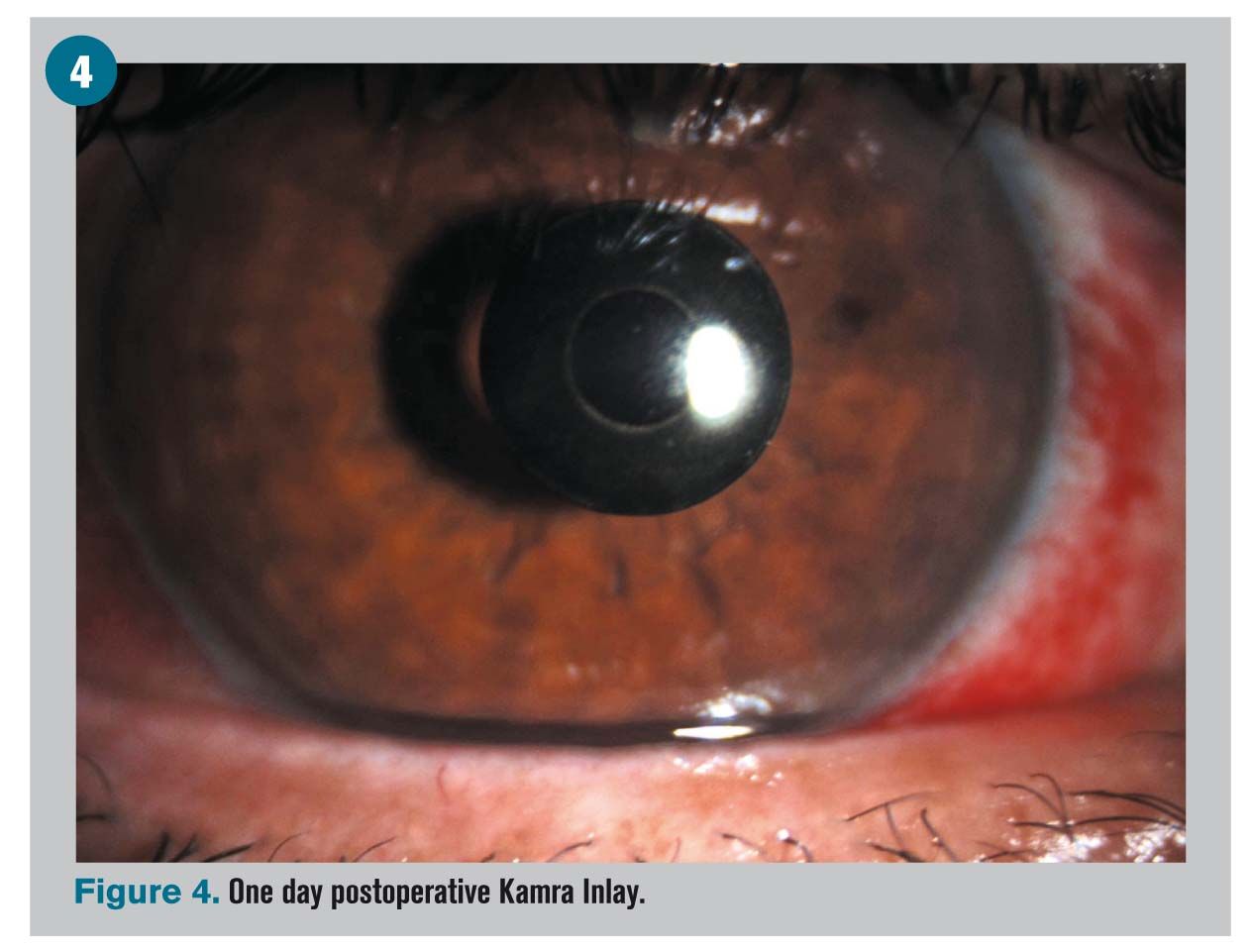New correction option for presbyopes
At present we are limited with our ability to treat presbyopes. Sure, we have progressives and multifocal contact lenses; however, from a surgical standpoint, monovision corneal refractive surgery is limited, and clear lens extraction is often extreme for emmetropes.

For the longest time, I felt that to be a true ophthalmic pioneer, it would take finding a cure for the single most heinous of nature’s evolutionary designs-presbyopia! Such a cure would make even the most skeptical of investors on Shark Tank envious.
At present we are limited with our ability to treat presbyopes. Sure, we have progressives and multifocal contact lenses; however, from a surgical standpoint, monovision corneal refractive surgery is limited, and clear lens extraction is often extreme for emmetropes. There is now another option which can provide a large percentage of these patients with good distance and near vision with the use of Kamra corneal inlay from AcuFocus.
Inlay for the non-dominant eye
Kamra is the only FDA-approved refractive inlay designed to be implanted in the non-dominant eye and is removable. This microperforated, opaque inlay increases depth of focus by creating a shield to unfocused light. At 5.0 µm thick, with a central aperture of 1.6 mm and an overall diameter of 3.8 mm, this small inlay casts a large presbyopic shadow. The inlay has over 8, 000 randomized spots that provide for this novel form of presbyopic correction.
Related: How technology changed optometry's role in cataract comanagement

As in any early surgical procedure, it is important to understand limitations and who will have the best chances at success. I recall with not such great fondness the excitement that the refractive community had when new lenses or surgical options were first approved. This translated into wanting to provide options for anyone, only to be let down when patients didn’t experience the same success as in clinical trials.
At the 2014 Optometric Council on Refractive Technology (OCRT) meeting in Denver, Sondra Black, OD, described the important pre- and postoperative regimens needed for Kamra’s success. In her estimation, when best practices are followed, patients typically achieve J1 to J2 near and 20/20 to 20/25 intermediate in the inlay eye.
Our clinic successfully implanted the Kamra in 11 patients, closely mirroring the results that Dr. Black described. Visual acuities at distance and near were markedly improved in these neophyte cases.
Next: Good candidates for corneal inlay
Good candidates for corneal inlay

Because this is a surgical option and medicine is not an exact science, the decision to implant the inlay first starts with proper patient profiles. The sweet spot is a patient who is aged 45-55, emmetropic to low hyperopia, < 0.75 D astigmatism, a stable refraction for a year, pachymetry > 500 microns and a mesopic pupil < 6.0 mm in size.
Subjectively, the patient should have a desire to be spectacle free and understand the process to achieve full results. Patients who have ocular or systemic disease, such as amblyopia, keratoconus, severe dry eye, or corneal dystrophy or degeneration, would not render a great outcome.
AcuFocus researchers realized that light scatter from early to late cataracts has a detrimental effect. An objective scatter index (OSI) is achieved by the use of AcuTargetHD, which detects and quantifies all lens changes, which is then correlated with the Lens Opacities Classification System III (LOCS III). AcuTargetHD also captures a tear film assessment, which will reinforce the need to improve the ocular surface.
More from Dr. Bloomenstein: Why wait to recommend cataract surgery?
Because the inlay is placed in a pocket created by the femtosecond laser, you can combine the insertion with a PRK/LASIK procedure for those who are outside emmetropia. A potential deterrent to the success of these patients is the ocular surface. Although this rings true with all refractive surgical options, it appears that Kamra is even more sensitive to ocular surface abnormalities.
Preoperative care should always include a thorough ocular surface diagnosis and treatment. Clinicians advocate the instillation of cyclosporine pre- and postoperatively, as well as the use of punctal plugs. Patients should be aware that reduction on the dependency of reading glasses doesn’t mean that correction may not be needed at some point. These patients should realize, like new presbyopes, that there are strategies to obtain better near vision, such as increasing light.
Next: Managing inlay patients

Managing inlay patients
The experience gained by optometrists such as Dr. Black and AcuFocus over the evolution of this lens have created a unique postoperative management of Kamra. Any inlay induces more healing to reach the refractive goal.
Although most patients will see refractive stability within four to six weeks, some outliers may take three to six months. As optometrists comanage corneal inlay patients, it is important to encourage the patient to neural adapt to the new lens and use binocularity without the crutch of a spectacle.
Because these patients are expected to be on a steroid for three months, it is important to monitor the intraocular pressure (IOP) at each visit. Patients should continue be monitored for any combination refractive result they may also have had performed. Continued use of cyclosporine and aggressive use of artificial tears is also necessary.
More on KAMRA: Corneal inlay technology offers new advantages
When examining the patient, it is important to realize the need for light and that the inlay’s increased depth of focus will make your refractive endpoint somewhat skewed. The inlay will appear to be off center when viewed at the slit lamp, and there may be inflammation in and around the lens. However, following the postoperative protocol should eliminate residual inflammation.
Future examinations on these patients will be seamless because all aspects of the comprehensive eye exam can be performed with the lens in place. Patients who develop cataracts in their inlay eye may opt to have a standard lens placed in the bag with the inlay still in the visual axis.
In my limited experience, Kamra inlay has demonstrated good distance and near acuity in a binocular environment. Patients have the peace of mind knowing the inlay is removable with very few side effects. Presbyopes may finally be ready to be the stars of the refractive world and soon we will hear “Lights, Kamra, Action!”

Newsletter
Want more insights like this? Subscribe to Optometry Times and get clinical pearls and practice tips delivered straight to your inbox.